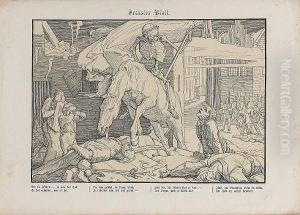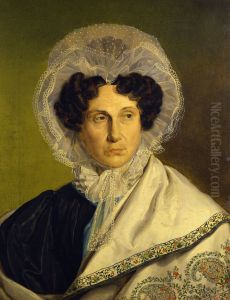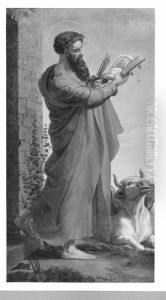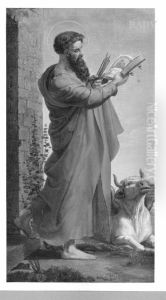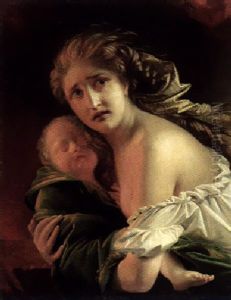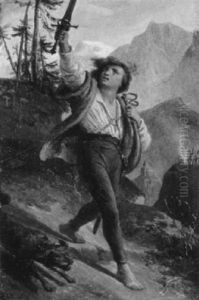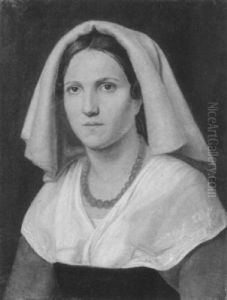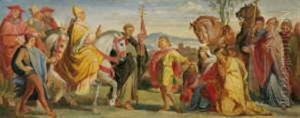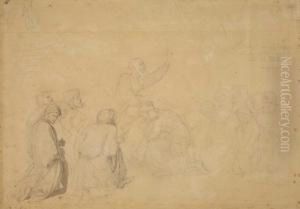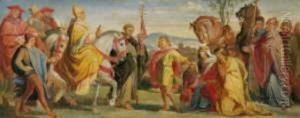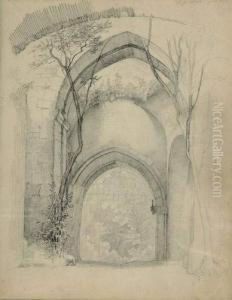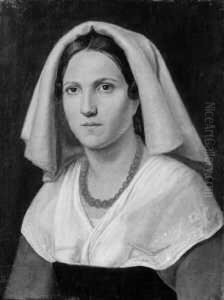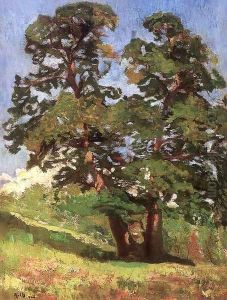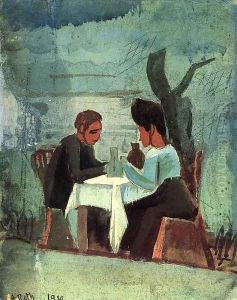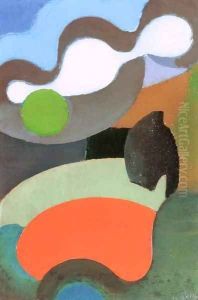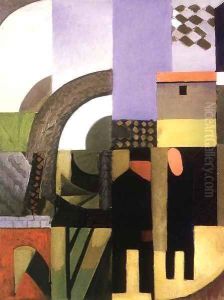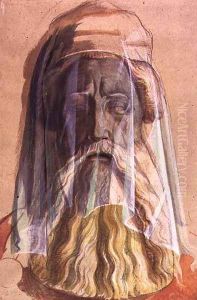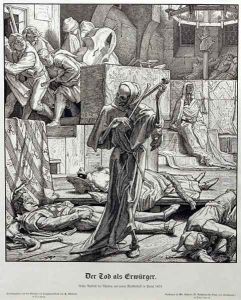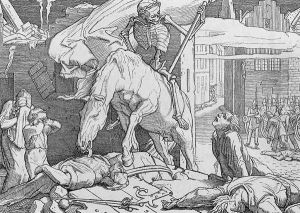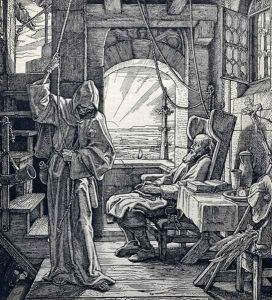Alfred Rethel Paintings
Alfred Rethel was a German history painter, born on May 15, 1816, in Aachen, Germany. He was known for his powerful woodcuts and vivid history paintings that often carried political or moral messages. Rethel's works are characterized by their clear composition and attention to historical detail.
Rethel showed an early talent for drawing and was enrolled at the Düsseldorf Academy of Arts at the age of 13. There he studied under the guidance of Wilhelm von Schadow, the director of the academy and a noted painter himself. Rethel's early works were influenced by the Nazarene movement, which aimed to revive honesty and spirituality in Christian art. However, he soon developed his own style that combined a romantic approach to subjects with a more realistic portrayal of figures and settings.
One of Rethel's most famous works is the series of woodcuts titled 'Dance of Death', created in 1848, which is often considered a reflection on the social upheaval of the time, including the Revolutions of 1848 that swept through Europe. The series includes allegorical and macabre images that resonate with the anxieties of the era. Another notable work is 'Hannibal Crossing the Alps', a history painting that captures the drama and struggle of the Carthaginian general's famous military expedition.
Despite his talent and some success, Rethel's career was marred by mental health issues. He suffered from what was then described as 'nervous depression', which would today likely be diagnosed as a severe mental illness. His condition worsened after 1850, leading to periods of hospitalization and affecting his ability to work. Rethel continued to produce art when his health permitted, but his output declined over the years.
Alfred Rethel passed away on December 1, 1859, in Düsseldorf, at the age of 43. His legacy includes a body of work that is admired for its intensity and its engagement with the social and political issues of his time. While he may not be as widely known as some of his contemporaries, Rethel's art continues to be studied and appreciated for its historical value and its emotive power.
